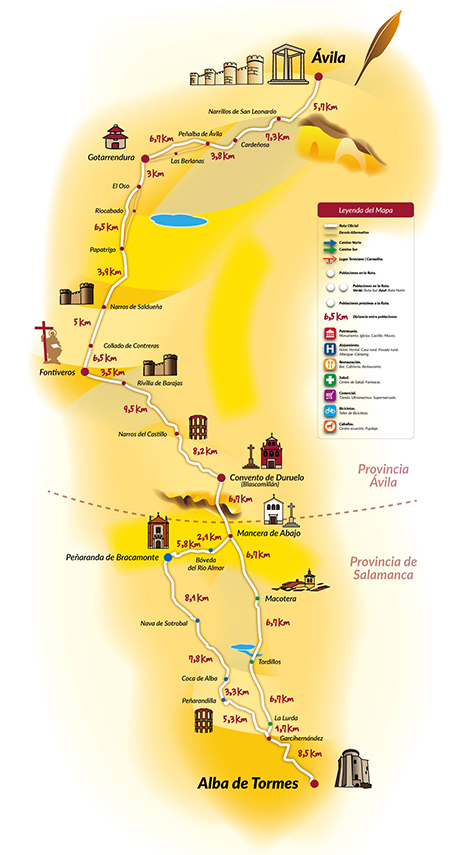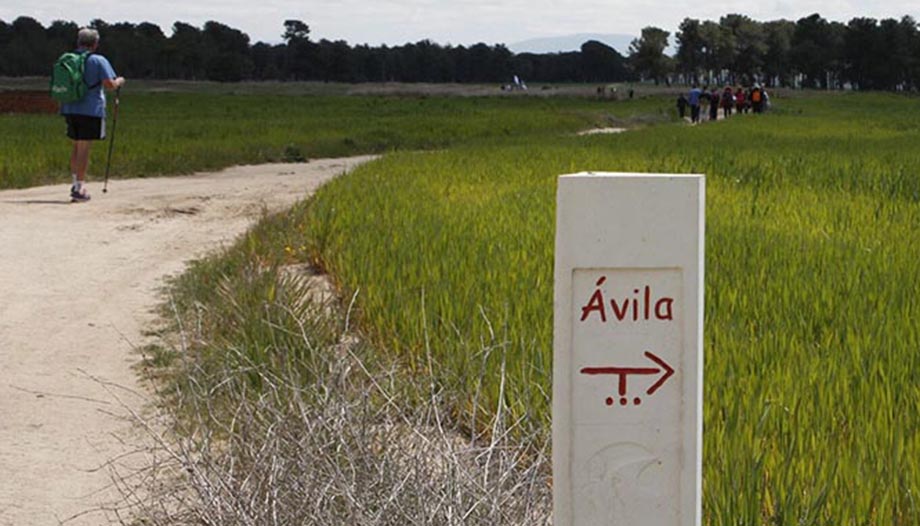The "walking saint" is one of the adjectives with which she is known. Saint Teresa of Jesus. The saint from Avila spent a large part of her life traveling through different areas of Spain making her foundations.
It is not surprising, therefore, that the pilgrimage, walking the roads that link the towns linked to her life, is a privileged way to know, understand and enter into the figure and example of a woman who opened paths of holiness with the renewal of Carmel, of which she was the main promoter.
These are the Teresian roads and especially the one that links the towns of Avila (birth) to Alba de Tormes (death), from the cradle to the tomb, which is also the name of the Association that brings together the municipalities of the 22 towns through which this road passes, cultural associations, entrepreneurs and the Carmelite monastery.
In the footsteps of Teresa of Jesus
As highlighted Ana Velazquezone of the driving forces behind the Cradle to Grave AssociationThe pilgrimage through various routes linked to the life of the Carmelite saints, Saint Teresa of Jesus and St. John of the Cross were already being carried out, it was in 2014 when, after presenting this idea to the provincial councils of the provinces involved, the signage and the work of dissemination of this pilgrimage began.

In fact already in 2015, the year of the V Centenary of the birth of the saint of Avila, the route was already fully signposted and, with the birth of the association De la Cuna al Sepulcro, which is responsible for managing and, above all, publicizing this pilgrimage. In its web The booklet contains all the information and documentation necessary to follow the Teresian Way: the spiritual guide, links of interest, map of services, etc.
This road also has its own pilgrimage accreditation: the wanderer. A document that is granted in the Carmel of Avila or Alba de Tormes once the stages have been completed, which can be done in both directions: from Avila to Alba and vice versa. Along the way, the accreditation can be collected in town halls and parishes of the localities and is stamped in each locality.
An affordable route
The route has the peculiarity of uniting two key provinces in the life of Saint Teresa and also has, along the way, points related to Saint John of the Cross such as Fontiveros, where the Spanish mystic was born, or Duruelo, a place that saw the beginning of the reform of the Carmelite friars.
A simple route, with flat stages linking villages very close to each other, which facilitates rest or the possibility of doing it with the family. The two slopes, north and south, are barely more than a hundred kilometers long. As Ana Velázquez points out "it is not a particularly long or intense route, which can be done in less than a week, which facilitates the organization...".
The route runs, at many points, through landscapes of wheat and rapeseed, especially beautiful in spring and autumn, which are the best times to make this route.
Silence, companion of the pilgrim
For Ana Velázquez a characteristic of this route is silence. The same silence that probably enveloped the steps of the saint of Avila, emerges as one of the great protagonists of the steps of the walkers. "It is very impressive, especially at sunset. In those moments when the horizon is very close and the earth meets the sky. I think this landscape, which Teresa and Juan saw many times, could also influence their spiritual life, in that mystical quest for union of heaven and earth".








